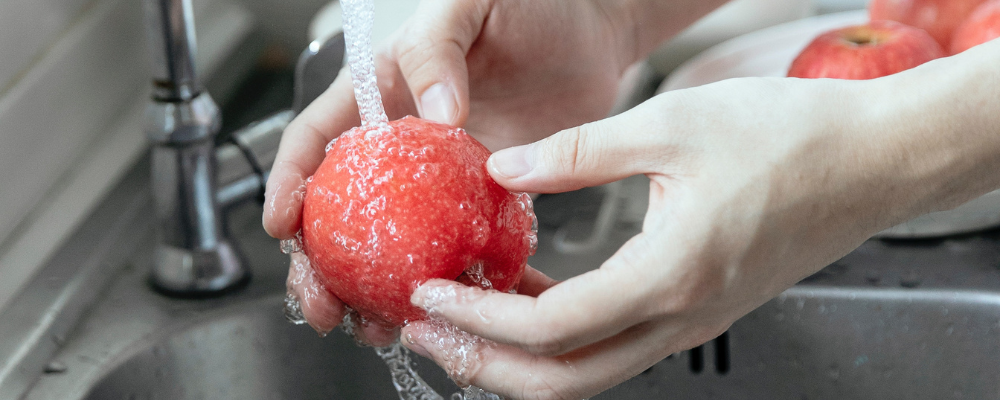
A Guide for Best Produce Washing Practices
— By Kayla Parsons, MS, RDN, Ph.D. Student, University of Maine Cooperative Extension
Eating a diet filled with various fruits and vegetables has many health benefits, but produce should always be washed prior to eating. Consuming unwashed produce can cause foodborne illness, such as E. Coli, Listeria, and Salmonella. Washing produce is quick, it takes less than five minutes and will keep you and your family safe from foodborne illness.
General Tips on Washing Produce
Yes, there is a right way to wash produce to ensure that harmful bacteria is removed. Follow these steps when preparing produce:
- Always wash your hands for at least 20 seconds with hot, soapy water prior to preparing food.
- Sanitize where you will be preparing the food, including countertops, cutting boards, and utensils that you plan on using. Remember to wash utensils before and after use. The outside of produce has bacteria that can transfer to other surfaces or produce.
- Wash produce using cool to room temperature, potable (safe to drink) water. Don’t wash produce with soaps or detergent because it can leave a residue.
- Once produce is peeled or cut, refrigerate immediately in temperatures of 40ºF or below.
Washing Tips for Specific Produce
Thick-skinned produce
Preparing pineapple, avocado, or other thick-skinned produce? Use a vegetable brush to scrub the produce to remove hard to get bacteria while running under cool water.
Produce with nooks and crannies
What about oddly shaped produce, like cauliflower, broccoli, or lettuce? Soak for 1 to 2 minutes in cool, drinkable water. Dry with a clean paper towel or let air dry.
Berries and mushrooms
To extend the shelf life on berries and mushrooms, wait to rinse until directly before use. These types of produce are susceptible to mold and any extra moisture can cause the mold to form more quickly. When rinsing berries, such as raspberries, place in a clean colander and spray with water.
Green leafy vegetables
Spinach, kale, cabbage, and other leafy greens can be rinsed by separating their leaves and soaking them in cool water for a few minutes. Then, drain the produce using a clean strainer or colander, and repeat! You can also presoak greens in a solution of 1/2 cup distilled vinegar with two cups of water. After five minutes of soaking, wash the produce again in clean, potable water. This method reduces the amount of bacteria on green leafy vegetables, but can leave a vinegar aftertaste and possibly change the texture. You can then air dry, using a salad spinner, or dry using a clean paper towel. If leafy greens are labeled “washed” they do not need to be washed again.
Excerpted from University of Maine Cooperative Extension Bulletin #4336, Best Ways to Wash Fruits and Vegetables
